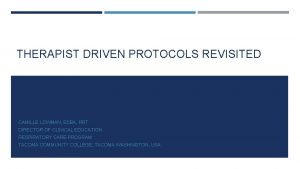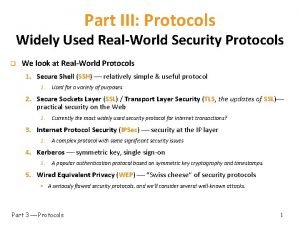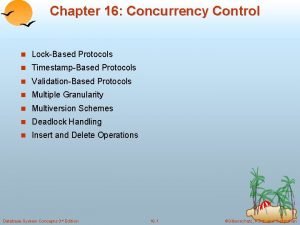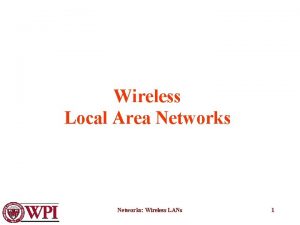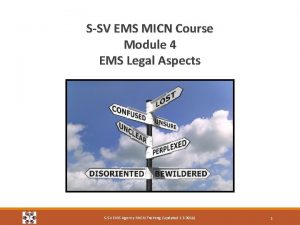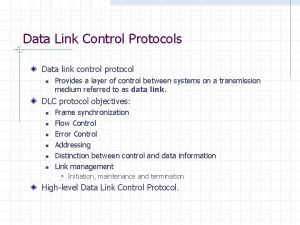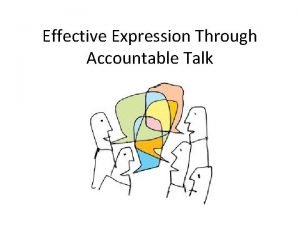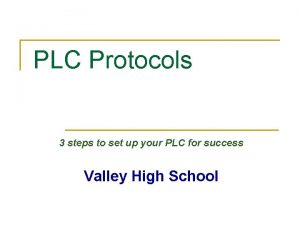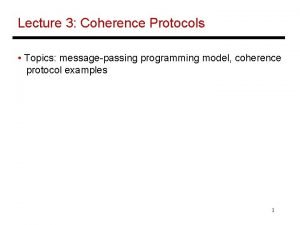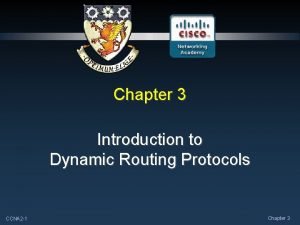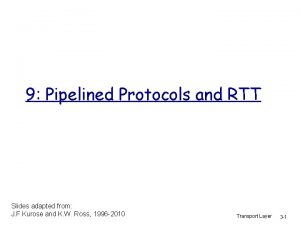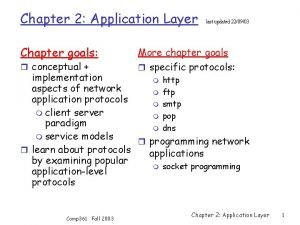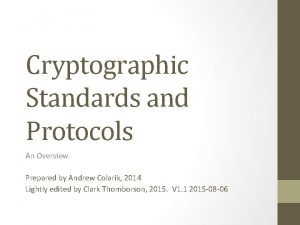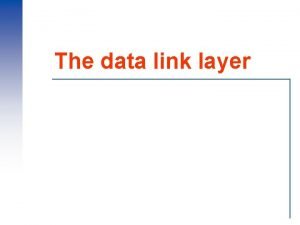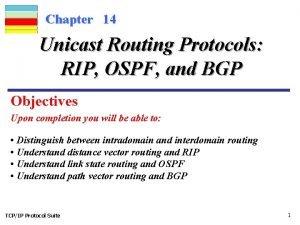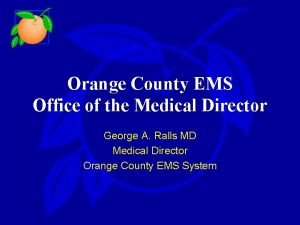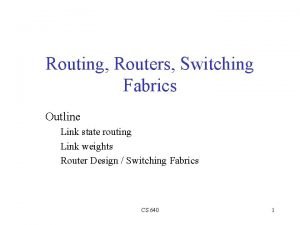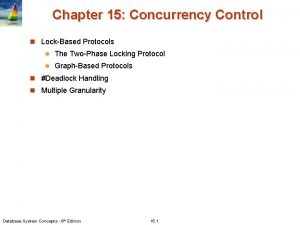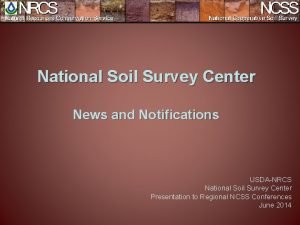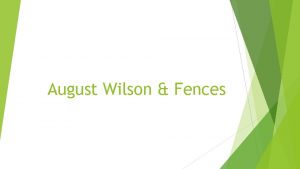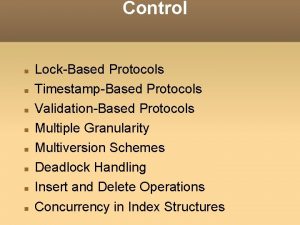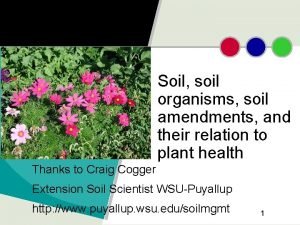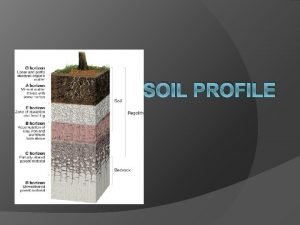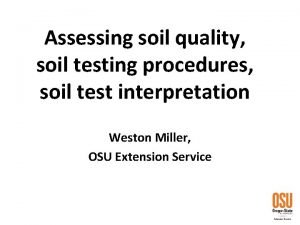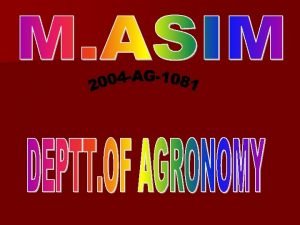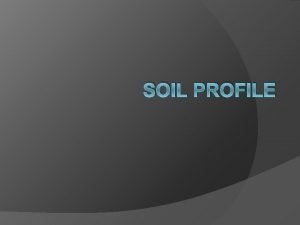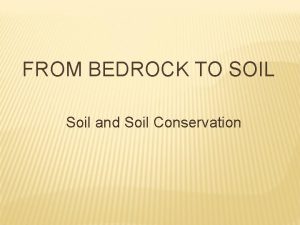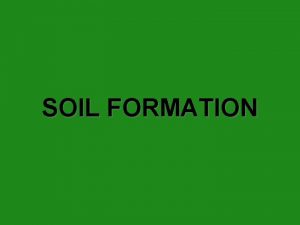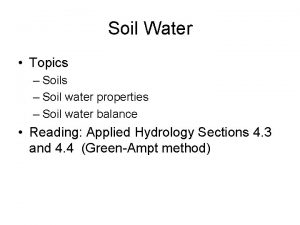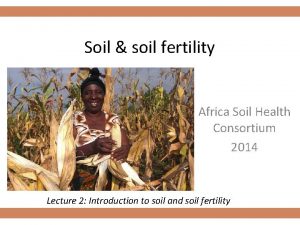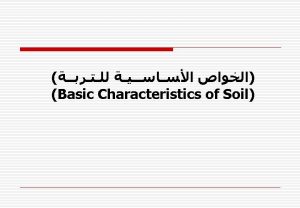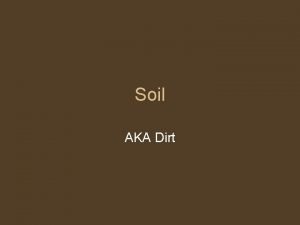USDANRCS PROTOCOLS Soil MappingSample Collection M A Wilson



































- Slides: 35

USDA-NRCS PROTOCOLS: Soil Mapping/Sample Collection M. A. Wilson and S. J. Indorante

OBJECTIVES To discuss: • Geographic partitioning of soils • Scales of data compilation / availability • Sample collection protocols

NATIONAL COOPERATIVE SOIL SURVEY Determines geographic distribution of soils: • landscape models • map unit/series descriptions • point analytical data • taxonomic classifications • interpretations/predictions

SOIL • A natural body composed of solids, liquids, and gases that occur on the land surface, occupying space, with one or more of the following: • Horizons or layers distinguishable from parent material by pedogenic processes • Ability to support rooted plants in a natural environment

Soil Genesis Model S = f (CL, O, R, P, T) • Climate • Organisms • Relief • Parent Material • Time Factors interact to create natural bodies on the landscape in a predictable manner

Soil-Landscape Paradigm • In a geographic area, only a small number of repeating soil-landscape units occur • Observable discontinuities exist between conterminous areas of different soil-landscape units

Common Mapping Scales Used in Soil Survey

Mapping Soil Geography Landscape (1: 100, 000)

Soil-Landscape Units (Landscape Scale)

Mapping Soil Geography Landform and Components (1: 25, 000)

Soil-Landscape Units (Landform Component Scale)

The Mapped Soils Map Unit Label Mapping Units are the basic units for identifying soil geographic order in a soil survey

Soil Correlation “Natural families of soil delineations that can be interpreted similarly are the ultimate and elusive goal of soil mapping and classification. ” (Hudson, 1992) The natural families created are mapping units.

Systematic Variability of Soil Properties • Attributable to a known cause • Gradual or marked change in properties related to landform, geomorphic elements, and soil forming factors. • Distribution patterns must be related to landscapes and geomorphic surfaces for effective soil survey operations. (Wilding and Drees, 1983)

Problems of Scale • Variations in soil properties range from megascopic (physiographic region and landforms) to microscopic in scale. • Relationship between systematic and random variability is likely to be scale dependent. (Upchurch and Edmonds, 1991)

Sample Collection Protocols

PEDON Smallest volume of soil that can be used to describe and sample the soil to represent the landscape unit Minimal horizontal area is 1 m 2, but can range to 10 m 2 depending on variability

PEDON • Sampled by NRCS scientists and National Cooperative Soil Survey (NCSS) partners at universities, state, and other federal agencies. • Sites are usually selected to represent a central concept of a soil series.


DETAILED MORPHOLOGY

Soil Taxonomy • Classification system used by the NCSS for identifying and labeling soils in mapping units. • Nomenclature identifies soil properties

Order: Vertisols Suborder: Aquerts Great Group: Epiaquerts Subgroup: Chromic Epiaquerts Family: Very-fine, smectitic, thermic Series: Sharkey

SOIL SERIES • Lowest category in the U. S. System of Soil Taxonomy • Conceptualized class of soil bodies on the earth’s surface • More restrictive limits than higher taxa. • Soil series serve as the means to transfer soil information and research knowledge from one soil area to another.

OFFICIAL SERIES DESCRIPTION

SERIES RANGE IN PROPERTIES


The Pedon Concept-Extending limited point data to geographic coverage

Soil Observation and Measurement Pedon Data A B R C Measurement Observation

Land resource Regions

Map based on STATSGO data

Map Based on SSURGO Data



CONCLUSIONS • The National Cooperative Soil Survey uses the model of soil genesis and the soil landscape paradigm to define landform components and soils. • Products include point morphological/analytical data with maps at various scales designed for land-use planning and interpretations.

 Convergent plate boundaries
Convergent plate boundaries Living soil vs dead soil
Living soil vs dead soil Landsat collection 1 vs collection 2
Landsat collection 1 vs collection 2 Documents against payment
Documents against payment Therapist driven protocols
Therapist driven protocols Presentation layer
Presentation layer Real world protocols
Real world protocols Routing and switching protocols
Routing and switching protocols Graph based locking protocol
Graph based locking protocol Wireless lan protocols
Wireless lan protocols Ssv ems
Ssv ems Link control protocol
Link control protocol Accountable talk protocols
Accountable talk protocols Plc norms and protocols
Plc norms and protocols Remsa emt recert
Remsa emt recert Victorian museum
Victorian museum Cache coherence protocols
Cache coherence protocols Routing protocols administrative distance
Routing protocols administrative distance Elementary data link protocols in computer networks
Elementary data link protocols in computer networks Inter vlan routing layer 3 switch
Inter vlan routing layer 3 switch Elementary data link protocols
Elementary data link protocols Pelan pembelajaran profesional
Pelan pembelajaran profesional Pipelined protocol
Pipelined protocol Application layer protocols
Application layer protocols Chapter 3 network protocols and communications
Chapter 3 network protocols and communications Cryptography standards and protocols
Cryptography standards and protocols Gsm protocols
Gsm protocols Sliding window protocol data link layer
Sliding window protocol data link layer Application layer protocols
Application layer protocols Write a detailed note on unicast routing protocols
Write a detailed note on unicast routing protocols Critical friends group
Critical friends group Gfta-3 bell curve
Gfta-3 bell curve Network security protocols
Network security protocols Orange county medical director
Orange county medical director Routing and switching
Routing and switching What are two pitfalls (problems) of lock-based protocols
What are two pitfalls (problems) of lock-based protocols




